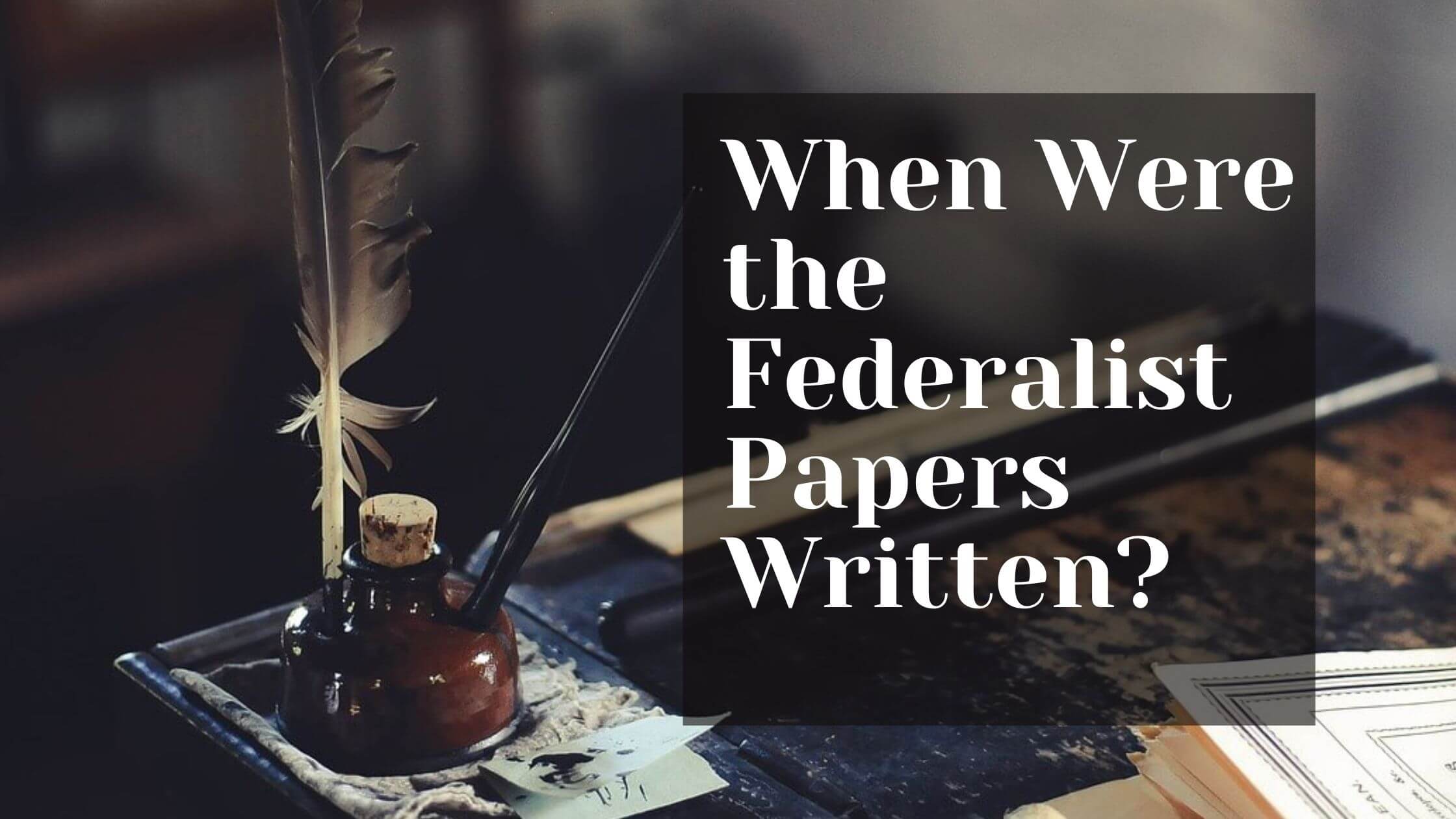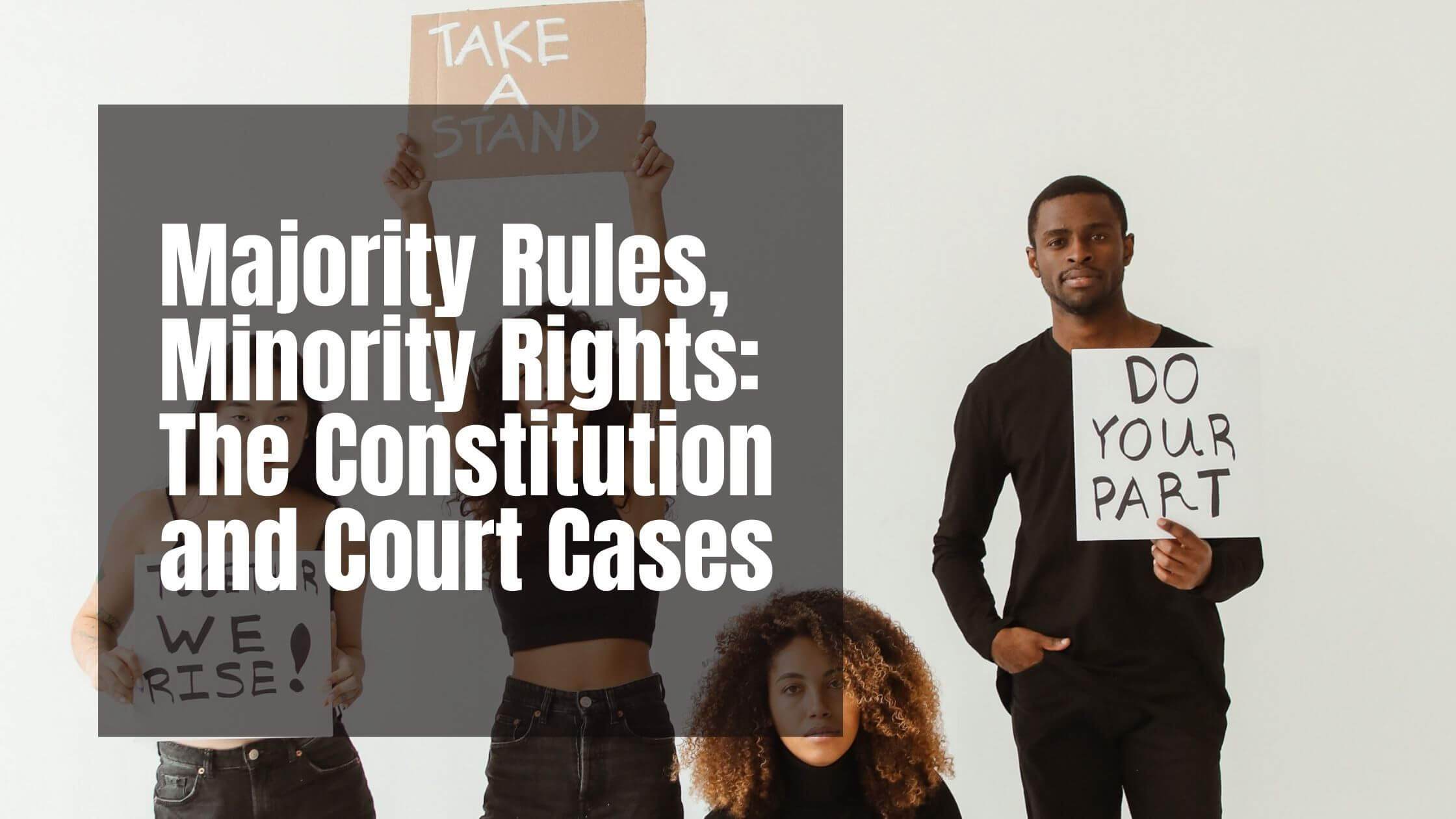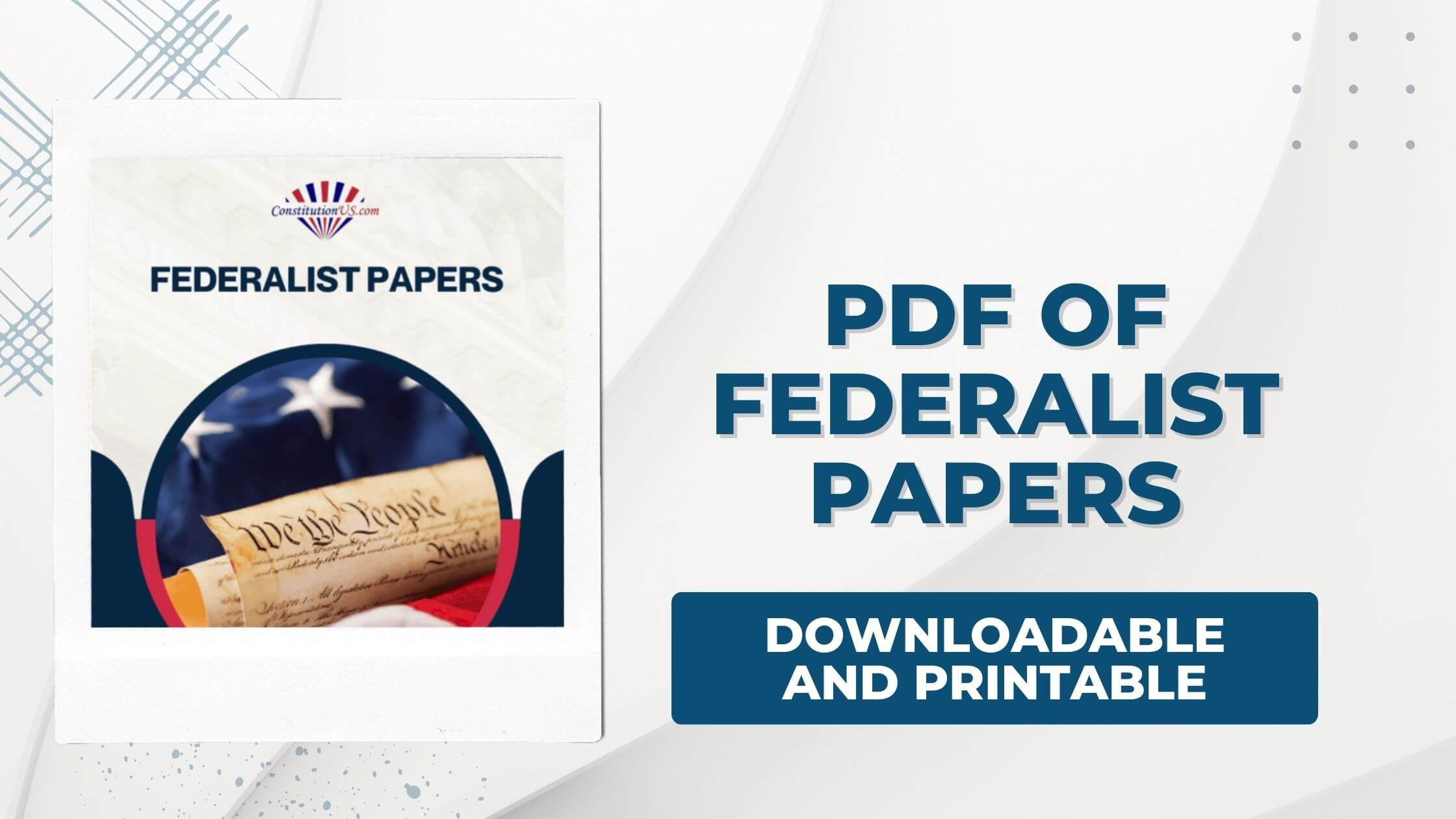Table of Contents
ToggleThe Men Behind the Federalist Papers
Alexander Hamilton, James Madison, and John Jay were all highly influential figures at the end of the 18th century. They not only helped shape the government through high-profile roles but also pushed their Federalist agenda in the creation of the United States Constitution. Their work and ideas are still available to read in the form of the Federalist Papers.
These essays were published at just the right time to steer the course of the constitution and counter Anti-Federalist opposition. Over time, they built up a strong argument in print media and explained the issues with the political system as it was. But when did it all start, what led to the papers’ creation, and what happened next?
Origins of the Federalist Papers
There was quite a long period of time between the first meetings of the Constitutional Convention in 1787 and the ratification of the document in 1788. The disagreements between the Federalists responsible for the themes of centralized government and the Anti-Federalists looking for a more state-focused approach continued. Some states were reluctant to ratify due to the opposition faced, so three key Federalists stepped up to the plate from late 1787 in an attempt to sway opinion.

The Federalist Papers set out to explain why ratification was essential by justifying the choices within the United States Constitution and the limitations of the Articles of Confederation. This was a significant moment in the campaign that would help set up the system we know today.
What Was the Catalyst for the Creation of the Federalist Papers?
To better understand the timeline of the Federalist Papers as a publication and their influence on American politics, we need to go back to the events that preceded them. The Federalist Papers were a means of defending the idea held within the new constitution. That document was the end result of protracted discussions at the Constitutional Convention in Philadelphia.
The convention’s purpose was for delegates of all states to agree upon appropriate amendments to the existing framework for government – The Articles of Confederation. In many ways, the Articles of Confederation were little more than a stop-gap solution for the emerging nation as it found its feet. It detailed some basics on the governance of the newly independent nation away from British rule.
However, it didn’t go far enough when it came to the general power of the government, the ability to generate income through taxes, and other key factors.
It was decided that the brightest minds in the country would devise an improved structure and draft a constitution that would meet the nation’s needs. Over three months in Philadelphia, there were many debates between those who attended over the best course of action.
Why Federalists and Anti-Federalists Struggled To See Eye-to-Eye
This is where the split between Federalist and Anti-Federalist beliefs becomes more prominent. The Federalists were eager to create a powerful centralized government system where they could build a strong series of houses within Congress, employ better taxation methods, and bring more unity between the states through that central capital.
Anti-Federalists weren’t keen on the concentration of power in one capital, and many feared that this placed too much authority in the hands of elite officials and less with state officials that could tend to the needs of their people. There were also fears that states would lose assets and rights and that smaller states would see a decrease in representation.
The Convention Dragged on Through Debate and Compromise for Months
The Constitutional Convention lasted from May 25th to September 17th, 1787. Historians note that it was originally planned to start on May 14th but was postponed due to a low turnout. Only Virginia and Pennsylvania arrived on time – which was easy enough for the latter but quite the feat from Virginia. Knowing the further history of the Federalist movement, what makes this more interesting is that the Virginian delegation contained James Madison.
Madison was keen to get going and had speeches prepared. However, he would have to bide his time to get his message across as most other delegations did not get there until much later. There were eight convened by May 25th for a more substantial discussion, though New Hampshire didn’t make it until late July. Of course, Rhode Island made a point of not attending, and this attitude would continue for years to come.
The Constitutional Convention would last for around three months before concluding with a first draft of the constitution. This was an seminal moment in the history of the nation. But, the United States was still a long way away from seeing the ideas mooted in Philadelphia become a reality. The next step in the process was to achieve ratification.
The Ratification Process Was Difficult, and the Federalists Needed To State Their Case
As with all important bills in America, there has to be strong majority support for it to pass. Bills are passed over to state legislators for their signatures, and once a two-thirds majority in favor is met, proceedings can continue. There was a steady stream of votes in favor of the proposed constitution, particularly from those with Federalist leanings.
Delaware was the first to add its name on December 7th, 1787, swiftly followed by Pennsylvania on December 12th, New Jersey on December 18th, and Georgia and Connecticut early in the new year. Massachusetts, Maryland, and South Carolina followed suit between February 6th and May 23rd. By this point, it was almost exactly a year to the day from the start of the Constitutional Convention.
There was also the fact that even though many states were in favor, none had formally ratified the document yet. Only three did so in 1787, with Delaware being the first. From there, more followed through 1788 as the Federalist Papers continued. They only needed nine for ratification to meet the requisite majority, and this came with New Hampshire on June 21st. Although the new Constitution was now legal and the government could proceed with creating Congress and preparing for a presidency, they still needed unanimous support.
Any state that didn’t agree ran the risk of being excluded from the United States and losing out on the benefits of constitutional protections. The Federalists needed to continue to apply pressure on the four remaining states – New York, Virginia, North Carolina, and Rhode Island. Virginia signed soon after New Hampshire on June 25th. Then there were three.
Who Wrote the Federalist Papers?
With the situation at somewhat of a stalemate and fears growing that the remaining states wouldn’t agree to ratify the Federalist-biased Constitution, a trio of delegates took on the task of persuading them. They began writing a series of essays to help engage the everyday reader and, in turn, convince voters in Anti-Federalist states to finally add their names in ratification.
Alexander Hamilton was the leading figure in this venture, writing 51 of the 85 essays that formed the finished Federalist Papers. Joining him was James Madison, who wrote 29, and John Jay, who wrote just 5. They initially took on the pen name of Publius, waiving anonymity long after ratification.
When Were the Federalist Papers Published?
The publication of the Federalist Papers began in October of 1787, just a couple of months after the conclusion of the Constitutional Convention. It was clear that New York was unwilling to budge on their position, and there was a strong risk that there would be a divide between the growing independent United States under the new Constitution and those that were against it. Some of the smaller states weren’t as big of a concern because there were more aggressive tactics to bring into play should they need to.
The timeline for the Federalist Papers as a serialization is surprisingly long – until you realize just how many essays the trio wrote. There were 85 spaced out from October 1787 to the following August. It was a well-structured affair, with an introductory statement and closing remarks. The essays came out week by week as talks continued and the number of states agreeing to ratification continued. A bound edition compiling the pieces was published under the same pseudonym in 1788.
At the time, the readership was fairly small. The essays were published in two New York newspapers, and while they may have been shared around, there wasn’t the same chance of nationwide exposure as there is today. Furthermore, just 500 copies of the book version were published. Still, it seemed to reach the right people and keep the argument in people’s minds while ratification was still on the table.
The Impact of the Federalist Papers and Continued Struggles
It was slow progress to get enough people on board to ratify the document and embark on the difficult task of implementing this new form of government. While the Federalist Papers should have helped to speed up the process, there were aspects of their argument that continued to cause concern.
One of these that became a major roadblock was the Bill of Rights. The lack of this feature in the constitution stalled the ratification process until the two sides could reach a compromise. The Federalists were against this secondary document but later conceded and agreed that Congress would work on one after the formation of this new government system.

The issue went up for debate at the New York Convention on June 17th in Poughkeepsie. More than a month later, on July 26th, there was a marginal 30-27 vote in favor of ratifying a Constitution with the Bill of Rights amendment attached. Over time, the rest of the states followed suit while the newly formed Congress fulfilled its promises. The Bill of Rights was approved on September 25th, 1989.
The Rhode Island Problem
With New York finally onboard, the main aim of the Federalist Papers was complete. However, the ratification process was far from over. North Carolina eventually followed on November 21st, 1789, but there was still Rhode Island: May 29th, 1790 (Rhode Island did not hold a Constitutional Convention.
Rhode Island had been a problem from the start. They didn’t send anyone to the initial Constitutional Convention in Philadelphia and held stubbornly to the belief that the Constitution was bad for their state. They fought against the Federalist ideas of centralized government over fears that it would weaken them on a grander stage. They also weren’t keen on the new clause about slavery, which they profited from greatly. This is another reason why North Carolina was opposed to the document.
Rhode Island is the smallest state in the country. At first, they didn’t let this hold them back, but that small stature was the deal-breaker. The United States had to fight and compromise for New York, but Rhode Island was more insignificant. As the nation got on with the task of building a new government and setting up the Bill of Rights, they didn’t need to worry so much about appeasing Rhode Island. The United States threatened exclude Rhode Island from the Union, and eventually, Rhode Island capitulated. On May 29th, 1790, around three years after the Constitutional Convention started, it was all over.
The Federalist Papers Remain a Fascinating Document
Another edition of these essays, now known as The Federalist, was published in 1818. Key differences here were that there were revisions by Madison where needed and that the authors finally removed their anonymity. There was no risk of repercussions now the three men had seen the process through, formed their government, and gone on to successful careers.
The timing of the Federalist Papers and the choice to serialize them was important in the grander timeline of creating the constitution. This could have been a couple of insignificant essays in a paper supporting the document at the time of its release to Congress. Instead of anything too self-congratulatory, they became a long persuasive series highlighting the strengths of New Yorkers at the height of tensions. New York and subsequent states may still have ratified without them, but they played their part.

Get Smarter on US News, History, and the Constitution
Join the thousands of fellow patriots who rely on our 5-minute newsletter to stay informed on the key events and trends that shaped our nation's past and continue to shape its present.










